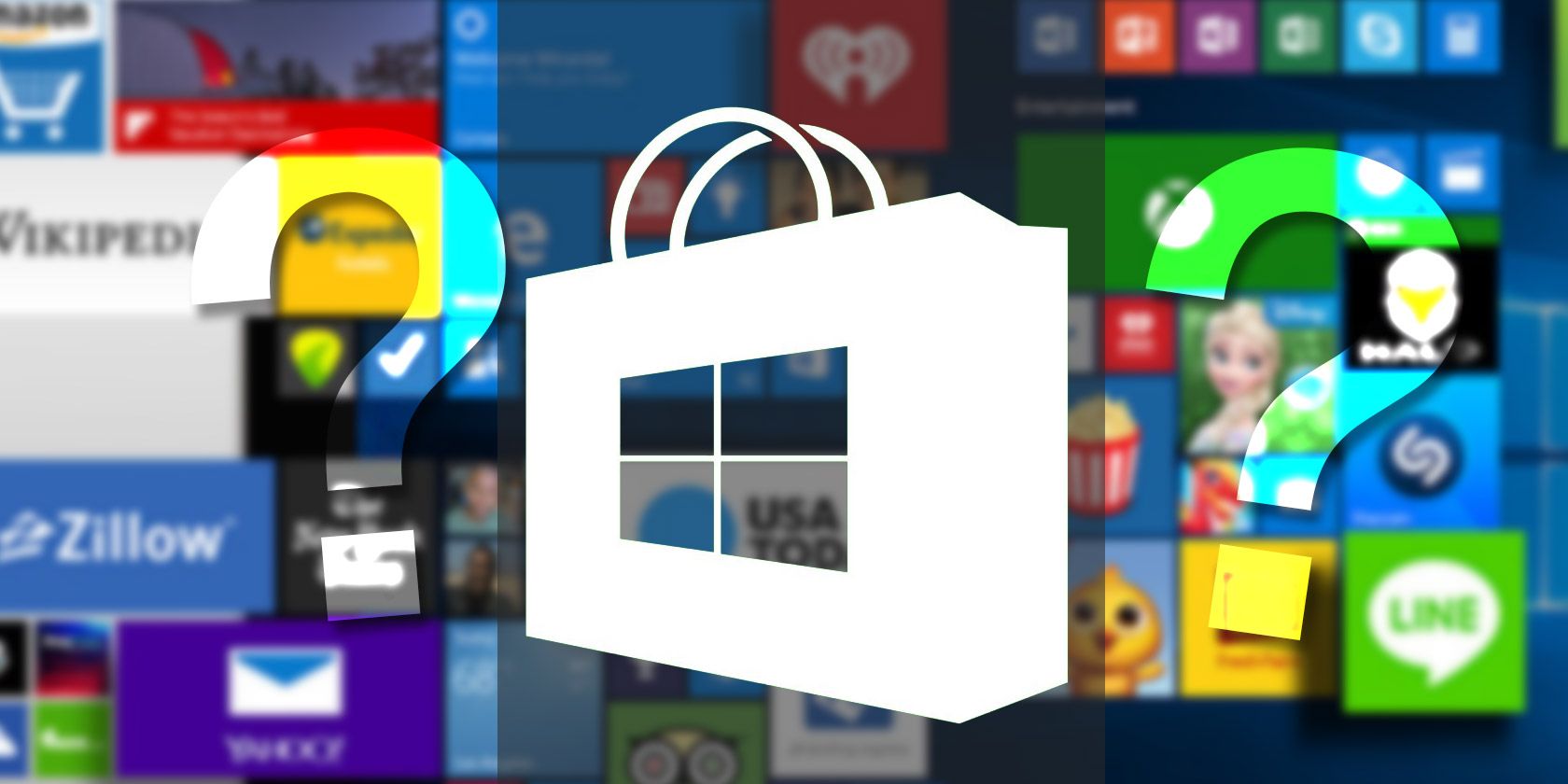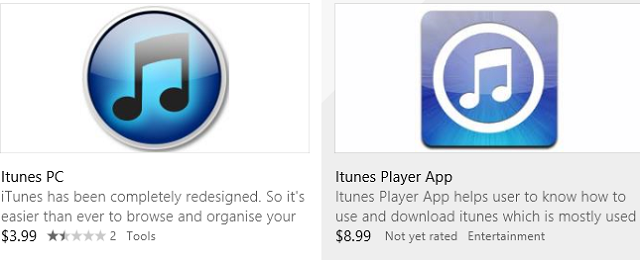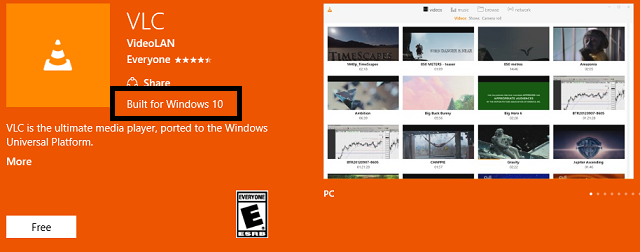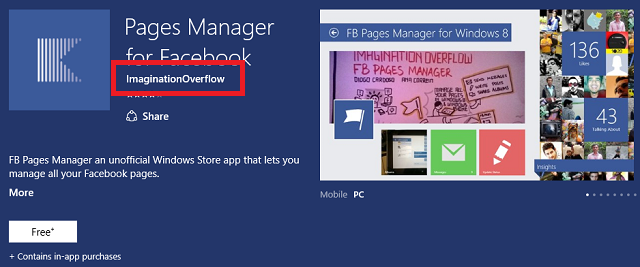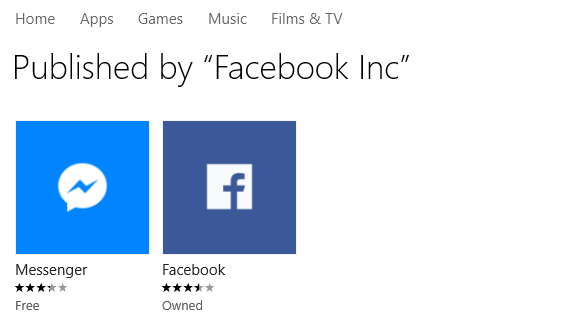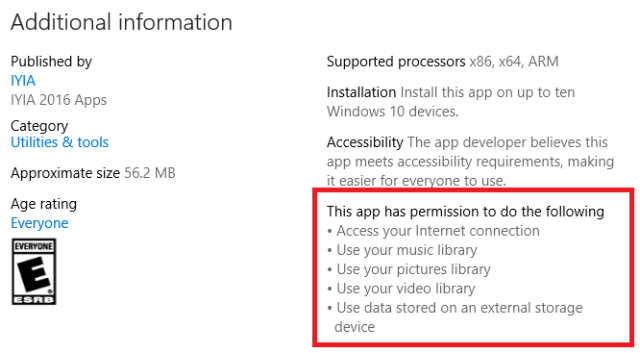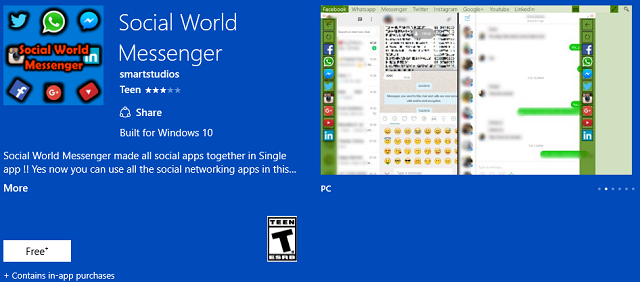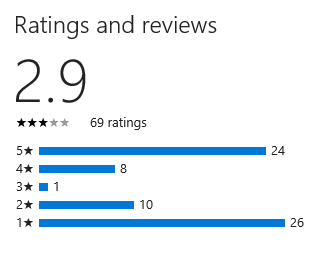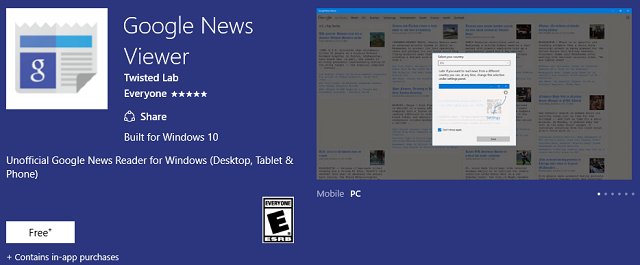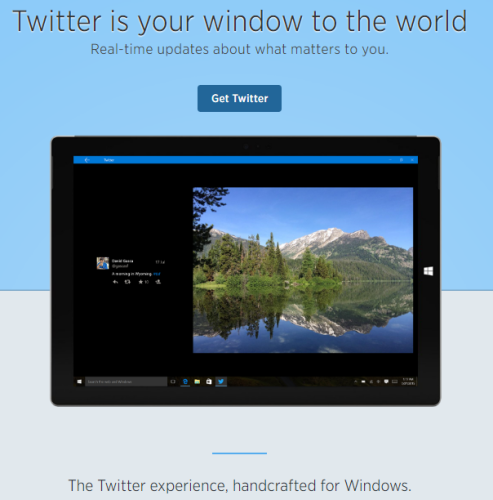Microsoft introduced its official app store back in 2012. It was an attempt to bring Windows onto a par with Google and Apple, whose app stores had been flourishing for years.
It received a lukewarm reception; users were unimpressed with the poor design, the limited selection of apps, and the way they interacted with the rest of the operating system.
As time went by, an even more serious problem emerged: Microsoft's quality control was failing to catch fake apps, scams, and insecure apps. The Windows Store was descending into farce.
The Current Situation
Thankfully, things have improved.
After a run of bad press, Microsoft finally addressed the issue in the summer of 2014, introducing important changes to its Windows Store policies. In a blog post, they summarized the changes into three key areas:
- Naming – to clearly and accurately reflect the functionality of the app.
- Categories – to ensure apps are categorized according to the app function and purpose.
- Icons – must be differentiated to avoid being mistaken with others.
These changes have largely eradicated situations like this:
However, the situation is still far from perfect. Keep reading for some tips and advice on...
How to Find Apps You Can Trust
1. Built for Windows 10
In February 2016, Microsoft started telling users which apps were specifically built for Windows 10. This notification is displayed in the form of a small tag at the top of an app's store listing.
You can clearly see the notification in the VLC app listing below:
It's important to stress that this tag alone does not guarantee the app's quality. But what it does prove is the app was released/updated since the new policies discussed above were introduced. The app should not, therefore, be claiming to do something that it can't nor impersonating another app.
Note: The notification is only available in Store version 2016.27.2.0 and higher.
2. Check the Publisher
All the apps in the store list the publisher's name – and it's a tell-tale sign of whether or not the app is what you're looking for.
For example, searching for "Facebook" within the store will give the official Facebook app and Facebook Messenger app as the top two results. The third result, Pages Manager for Facebook, also looks official.
Open up the listing, however, and you'll discover that the publisher is "Imagination Overflow", not Facebook itself.
You can easily find which apps are published by a certain company – just click on the publisher's name. If you do this on the Facebook app, you'll see that "Facebook Inc" only makes the main app and Messenger, nothing else.
That said, some third-party apps are excellent and are fulfilling a hole left by the first-party offerings. Some people, however, are reluctant to share all their information with such providers. If you're one of those people, be vigilant.
3. App Permissions
App permissions are a contentious issue, regardless of which operating system you're using.
Android recently introduced a way for users to manage each permission individually, and although the Windows Store doesn't yet offer such high levels of customization, the permissions that an app requires are another good way of establishing its trustworthiness.
Take a look at Melodia. The app claims to be "a library of useful tones for your mobile phone". Users send audio tones to their device by hitting the Save button (on Windows Phone) or the Share button (on Windows desktop).
So why does it need access to your pictures library and your video library?
Once again, I'm not suggesting Melodia is a scam or involved in unscrupulous activities, but situations like this undoubtedly set off alarm bells.
Be alert – always check what permissions and/or data you're giving away. Scroll down to the bottom of an app's listing and look under Additional Information to find out.
4. App Ratings
Ratings are probably the most telling sign of all. They are easy to check, being displayed on both a search results page and the app's listing page.
Look at the app listing for Social World Messenger below. It purportedly pulls together a variety of social media feeds into one single app. Sounds great, but based on a 3-star rating from 69 people, would you download it?
Delve a little deeper, and you'll find out that of those 69 reviews, 26 are 1-star, 24 are 5-star, and just one is 3-star. This suggests that for a lot of people, the app simply doesn't work. A majority of reviews clustered around 3 stars would be more comforting, possibly hinting at design flaws or missing features, rather than an outright lack of functionality.
Remember, trustworthiness is not just about security and scams, it's also about being able to trust an app to work and fulfill its function every time you want to use it.
5. Check the Logo
If you're looking for an app for a service you use regularly, there's a high chance you recognize the official logo.
As discussed, Microsoft clamped down on logo impersonation in their new store policies – so if you see an app claiming to provide a service, but which doesn't have the official logo, you can be certain it's not from the developer you're looking for.
For example, check out this Google Drive client:
However, despite the new policies, some do slip through the net. Look at this Google News Viewer. The name could easily be misinterpreted as being an official Google app, and doesn't that logo look suspiciously familiar?!
Once again, if in doubt, check the publisher.
6. Visit the Website
If you're still unsure about an app's legitimacy, visit the app's official website. Most well-known apps and developers will include links to their Windows Store listing.
Use all These Tips Together
Clearly, the situation is vastly improved compared to a couple of years ago, but issues still arise.
As you might have realized from reading this article, there is no magic bullet; there is not one single tip or trick that will give you a 100 percent success rate in determining the veracity or trustworthiness of an app – you need to use all these suggestions in conjunction with each other.
Be vigilant, do your research, and read the reviews – if it looks suspicious, it probably is.
Above all, memorize this mantra: if in doubt, don't download.
What is your opinion on the current state of the Windows Store? Have you been caught out by a scam or fake app? Let us know your stories and opinions in the comments below.

